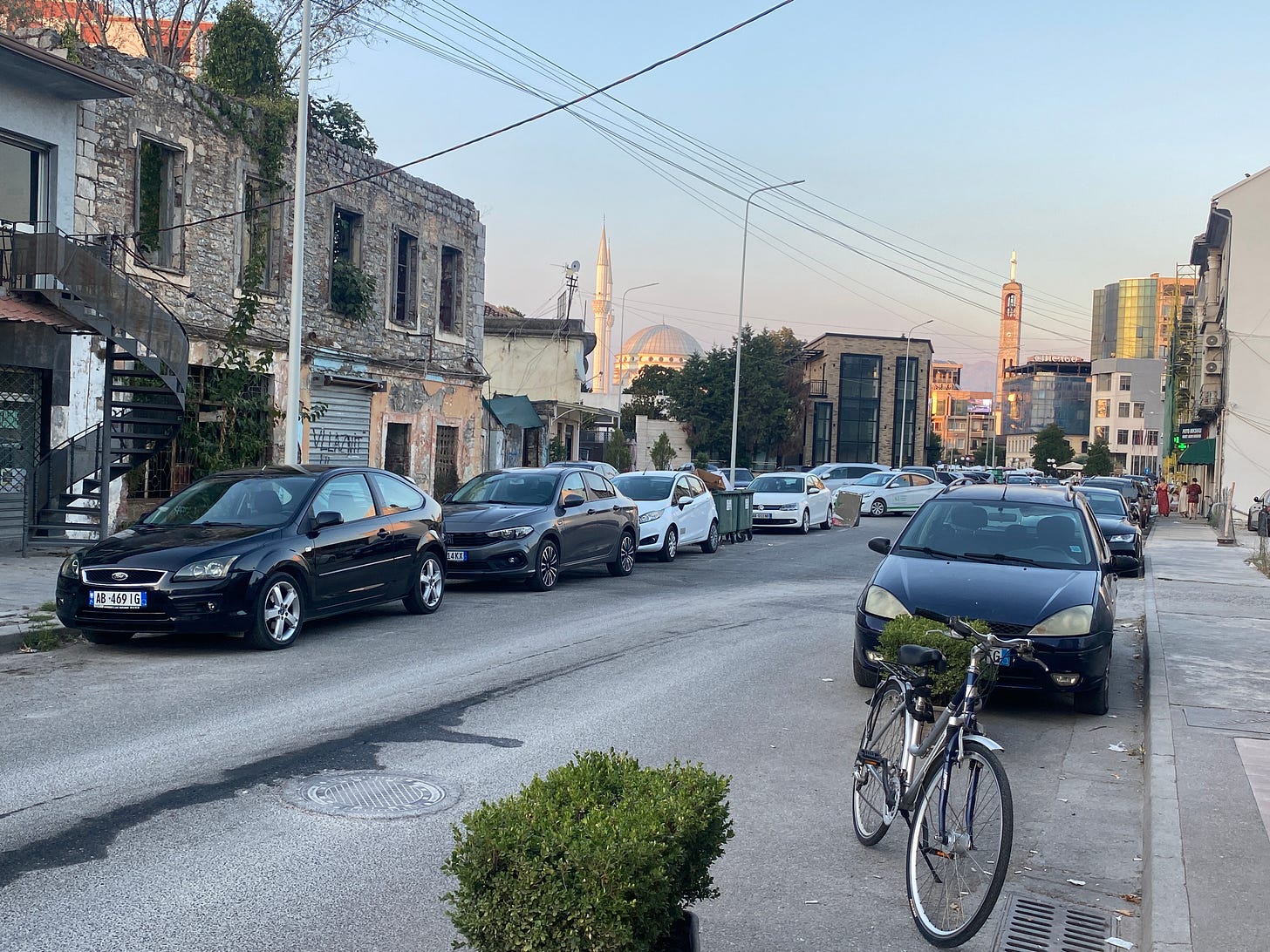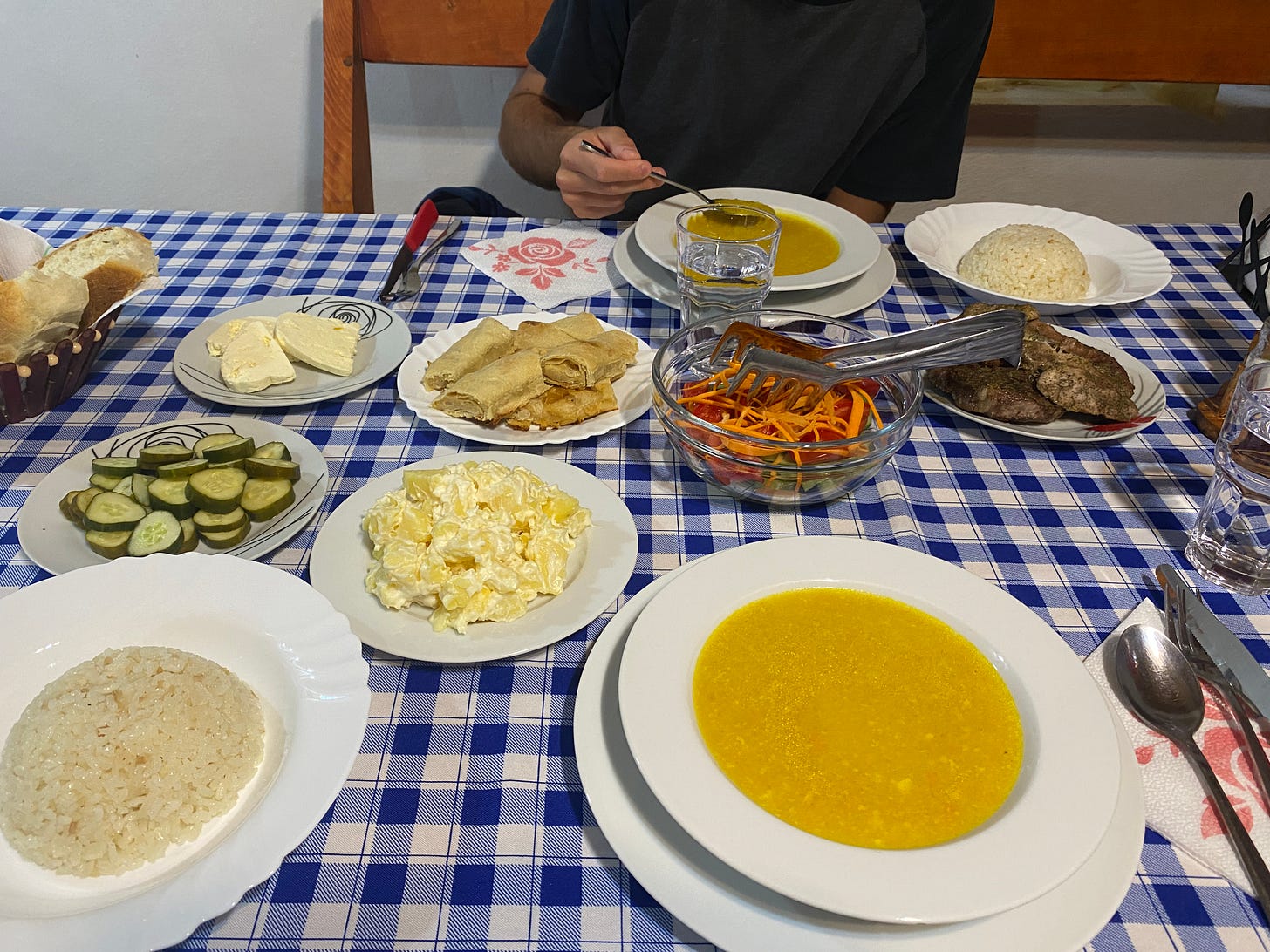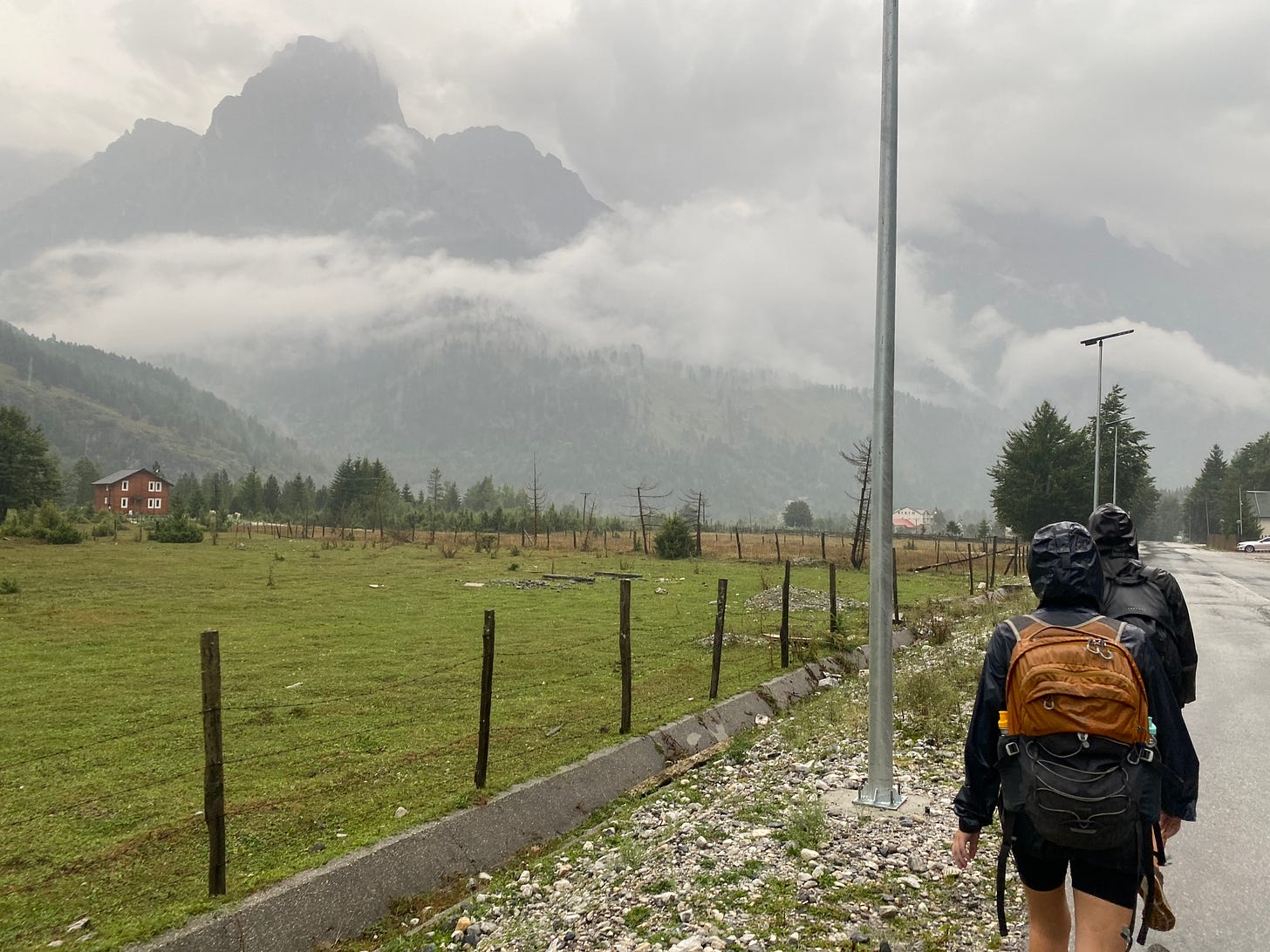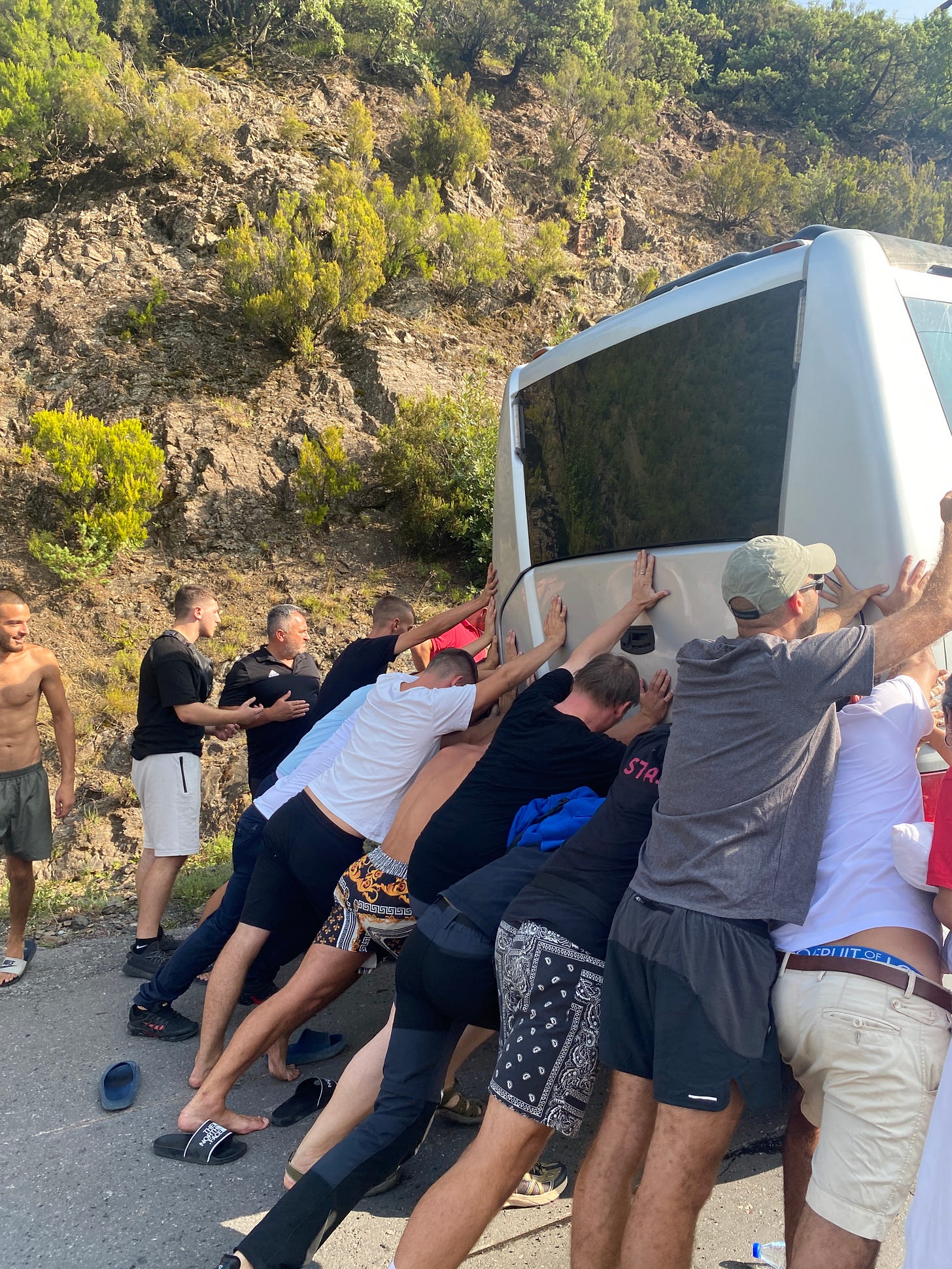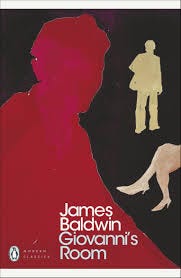"Problem": Adventures in Albania
What travel influencers won't tell you about this 'hidden gem' in the Balkans...
Behind every Instagram post is a series of photos and stories that don’t get shared.
But sometimes, these stories deserve to be shared.
While not much of my short time in Albania made it to Instagram, the week I spent travelling there provided more material for bewilderment, curiosity, shock, adventure, and just plain good fun than almost my entire seven months away. So, I figured there was no time like the present to write this newsletter.
Albania is a travel destination that has been highly trending in the past year. Travel publications, bloggers, and even coveted guidebook Lonely Planet have written extensively about it as the latest and greatest ‘hidden gem’ to discover.
The dream we’re sold is that you can enjoy idyllic beaches by the Adriatic Sea, hike through picturesque mountains and valleys in the Alps, and experience the charm of classic Ottoman architecture at UNESCO World Heritage sites. All this, while avoiding the summer crowds in more popular destinations like Spain and Italy.
So, now that my Schengen visa days had all but run out, my partner had proposed Albania as a destination nearby to continue our adventures, before returning to the European Union for our last stint, in Austria. He had done an enormous amount of research and received recommendations from trusted friends to check it out. Hence, while I had low expectations, we decided to give it a try.
Not one of these blog posts, travel guides, or publications mentioned anything even remotely challenging about travelling in Albania. Between beautiful photos and rave reviews, it looked like some kind of intrepid, cultural adventure. And to everyone’s credit, I suppose it was both of those things. Just not at all in the way I expected.
So, please enjoy this very honest newsletter about our tumultuous adventures in Albania.
First, some historical context
Albania is one of the smaller countries on the European continent, with a total population of less than 3 million. It suffered one of the most horrific communist regimes in the world for over four decades, with ruthless persecution of religious leaders and intellectuals in the pursuit of an atheistic state and centralised control. To put things in perspective, dictator Enver Hoxha even condemned the USSR for being ‘too lenient’ with their communism in the 1950s, following Stalin’s death.
The breakdown in relationship between Albania and the Soviet Union led to a paranoia that Albania would be invaded by Yugoslavia, NATO or the Warsaw Pact states. So, Hoxha ordered the construction of more than 750,000 concrete bunkers across the country, which are still largely present today. Hoxha also formed a strong relationship with China for a period, with China providing economic assistance to Albania for many years. They even shared mutual propaganda messaging through film, radio, and TV.
Because of Albania’s break from the Warsaw Pact and severed ties with the Soviet Union, Albania became one of the most isolated countries in the world during their communist regime — like a prison, that very, very few could escape. It was the last country on the European continent (besides the Soviet Union) where communism fell, following the onset of student protests in 1990.
Our walking-tour guide in Tirana told us that the first capitalist product imported to Albania was Coca-Cola. Apparently, people used to present the iconic bottles proudly on their shelves at home as a symbol of the fall of communism. This image is now burned in my brain — it was the start of a new era.
This wasn’t the end of the story either. Albania was considered one of Europe’s poorest countries in the 90s, and fell into chaos in 1997 due to failed government pyramid investment schemes.
All of this is to say… Albania is still picking up the pieces and refining their democracy after only 34 years since the fall of communism.
And as a tourist, the growing pains are immediately apparent. For instance, road infrastructure is underdeveloped, with single carriageways operating between major cities like Tirana and Shkodër. The driving is notably chaotic, and cars are now a great point of pride for Albanians — where previously there were only about 7000 cars in Tirana during communism (as private vehicle ownership was not permitted), this has now exploded to over 300,000 vehicles. The architecture is also quite uniform and tired — though the depressing exteriors are not always reflective of what’s going on inside buzzing restaurants and stylish hotels.
So, what about the future?
Chatting to some locals, I was fascinated by the age divide and outlook between those who remember communism, and those who had never lived through or experienced the regime. In fact, the not-for-profit research group Institute for Development Research (IDRA) conducted a survey in 2015, which showed that 45% of overall Albanians felt that Hoxha had a negative impact, where 42% felt he had a positive impact. For instance, some people remember fondly that everyone was given housing and a job during communism, where others remember the destruction and control Hoxha left in his path. A higher proportion of younger Albanians (16-35 year olds) thought that Hoxha had a negative impact on Albania as a whole.
I was quite inspired by the hope that our young tour guide in Tirana had for the future, despite the country’s complex past. He mentioned that a lot of people are now getting educated overseas, learning from other democracies and bringing their expertise back home.
As Albania looks towards the future, a big focus is their goal to join the European Union. They have been in negotiations for about a decade and serious talks are starting up again this week to move towards this goal by 2030. However, there is still a lot of work to be done to bring them up to the EU’s high standards for rule of law, market economy, and human rights.
Tourism in Albania
One of the income streams that has been aiding Albania’s economic recovery (and potential candidature for the EU) is tourism, which has been an important part of their GDP growth post-COVID. In 2023, tourism contributed one in four lek (local currency) to the Albanian economy, a significant increase of over 39% in tourism income since 2019.
This lined up with our experiences. After barely hearing about Albania as a destination until about a year ago, we found that there were more Australians there than possibly any other destination I had travelled to in the previous five months. These Australian tourists were almost all Gen Zs, which made me think that its lower cost compared with other European destinations perhaps made it more enticing for Aussies.
However, the tourism sector in Albania is still just starting to build up. As a result, there are a lot more hurdles to jump through and some experiences are not yet seamless. So without further ado, here are some highs and lows of our time in Albania.
Highlights and Lowlights of Albania
Shkodër
After a brief overnight stint in Tirana, we properly kicked off our trip in Shkodër, a gateway city to the Albanian Alps. Initially, I had pictured this city being by the water, with charming medieval gates and bridges, due to some promotional photos I saw online. So, I was in for a bit of a rude shock when we arrived to extreme heat, rundown white streets, and ashen-faced locals walking down the street.
I was taken aback by how much communist propaganda was still present in the city, such as sculptures and statues in the socialist realism style. While my partner was recovering from some horrific food poisoning, I took a morning out to explore the Shkodër Site of Witness and Memory, a museum detailing the terrors of the communist regime.
Reports of the relentless persecution of religious leaders, inhumane torture methods, treatment of political prisoners, and obliteration of hope completely shocked and upset me. I realised that freedom is not something we should ever take for granted in a country like Australia. It also made me reflect on the importance of religious freedom and thought in society — something that has been reinforced by my visits to other states where religion (or lack of religion) is embedded and enforced in their constitution.
Overall, in Shkodër we experienced very welcoming hospitality from the locals, polite and capable staff members, and even a fun nightlife once the restaurants and bars had lit up at night.
Theth
We soon jumped on a bus from Shkodër to Theth, making a bunch of random stops on our journey. The driver would jump out to pick up various goods such as beer, watermelons, and bread, which he proceeded to drop off along the way. It seemed that he was running a multi-revenue stream delivery service: delivery of food, goods, tourists… We even picked up a kid off the highway, who he later dropped off. (For some reason, there was always a local kid at the front of the tourist bus in Albania.)
However, there was a larger drama brewing. Just as I jumped onto the bus, my phone had slipped between the cracks of the back seat, into the boot of the vehicle.
This wouldn’t usually have been a problem, because we could have easily just opened the back doors of the van to retrieve it. But our driver had bolted a storage unit onto the back of the van (which barely looked roadworthy), therefore the doors were not possible to open.
So instead, my partner and I were left staring down at the phone for most of the trip, debating whether or not we could just leave it there.
Soon, our driver pulled over at a roadside shack for a stop, turned around, and said “Coffee.” We all unloaded out of the bus.
Ever the problem solver, my partner retrieved a scooping utensil that had been left on the side of the road outside the shack. He jumped back in the bus, and after several attempts to collect the phone, finally managed to scoop it back out to safety. We hastily sprayed it with a decent amount of disinfectant before hitting the road again.
Eventually, we were dropped on the side of the road in Theth, a dusty, rocky village at the base of the Albanian Alps, and hiked up to our B&B in the hills to settle in for the night.
Exhausted from the day, we enjoyed a comforting meal our hosts put on, featuring a bunch of Albanian fare — fresh cheeses, soups, vegetables, and nondescript meats.
We suffered through a still night in the heat, a single pedestal fan fighting for its life as the power dipped in and out.
On the Trail to The Blue Eye
The next day, we tackled the Blue Eye hike, an 11km trail from the village to a waterfall oasis — a popular swimming spot.
We were warned by a family from Barcelona at the B&B that it was “probably going to rain”, but risked it anyway to see what we could of Theth in the little time we had.
At the very beginning of the trail, we started on a highway, which had the most terrible amount of rubbish strewn through the forest that I’ve ever seen in a national park. I felt disgusted by the lack of respect for others and the environment, and was shocked at the lack of conservation from the Albanian government (though as I’d soon learn, they had much bigger problems to tackle).
As we continued walking, we saw a group of horses eating from a large pile of rubbish, and a foal lying down in the muck, seemingly dead. Thankfully, he got up, indicating that he was still alive. But I reflected that it was one of the saddest things I’d ever seen.
Once we got deeper into the trail, the hike itself was quite picturesque, however the dryness and immensity of the mountains seemed almost artificial, accompanying the messy human settlements in the cracks of the valley.
When we arrived at the Blue Eye, we were hot, sweaty, and dehydrated. The icy turquoise spring water was like knives to our skin. It took some adjusting to, but ended up being one of the highlights of the trip to cool off in that fresh, blue water.
While my partner was angling for us to hike the four hours back, it was already 3pm and rain clouds were brewing, so I suggested we take a bus back to Theth for just 5€.
As we emerged from the trail, three men shouted ‘Theth bus!’ at us (like clockwork), so we nodded and gave the thumbs up. They gave the signal back, and parted ways to reveal a man with one arm in a sling leading us towards his car. The hatchback had a paper sign plastered on the window, which read “Mini-Bus”.
My partner looked pale as a ghost as he realised this one-armed driver would be the one taking us back to Theth. We caught the incredulous eyes of our fellow passenger, an older French man who was being led there by his local Albanian mate. Me? I just smiled in disbelief — I was along for the ride.
Our one-armed driver sped through tight mountain corners as the rain pounded down on our little car. We zoomed along as he chatted in shqip with the French man’s tour guide, smiling and laughing with ease.
Miraculously, we landed back in one piece, and our French mate said:
“Wow, you were a great driver. If you had two arms you’d probably be in the Formula 1!”
There was much about Albania that was completely unorthodox. Things that would not pass health and safety checks in developed countries like Australia or France.
But I had to admit… sometimes the way they got things done was just way more fun.
Valbonë
The next day, we packed our bags and started the 16km hike from Theth to Valbonë. Our Barcelona friends warned us again on the way out, “It is going to rain.” But we had no choice, so we set out with optimism.
I found this hike a lot more traditionally stunning than the previous day, as we passed through leafy forests, scaled mountains with impressive valley views, and enjoyed the strong, tar-like coffee at makeshift cafés along the way.
However, as we made our descent into the valley, the quality of the trail and the signage deteriorated. We had not packed the right shoes, imagining the trail would be more leisurely, and slipped our way down the rocky track. Frustrated, tired, and increasingly hungry, we counted down the kilometres until we would make it to the comfort of our hotel in the village.
But then from a distance, “Hey! Look who it is…”
We had made some new friends the night before over dinner, a couple who was almost the mirror of us, if we had grown up in the UK. It’s common to meet people with shared values on the trail, and I revelled in the new connections we made while travelling. They had left significantly earlier than us, wanting to take the track slow. But here we were, reunited.
The rain started to come down, and we took our opportunity to stop at a restaurant. Talking, laughing, sharing food and stories from our travels and Albania, we warmed up and recharged a bit. The rain eventually eased, and we headed out on the road again. Moving swiftly, we knew that we didn’t have much time left until the next downpour.
But even our young legs could not outrun the onslaught of rain that hit us. We laughed and ran, hiding under some pine trees. Disastrous moments like these have a unique quality of pulling you into the present. We talked a while, comparing issues from across the seas that faced people our age like the housing market, and those overcome by unhappiness in the pursuit of status. I remember our friend saying passionately as we smiled and huddled, completely drenched in the rain,
“I’m not earning money for the sake of it, I’m making money to pay for THIS!”
And I thought, with gratitude, how lucky we all were.
We eventually gave up hiding and accepted our fate, becoming more and more drenched as we hiked the extra hour, eventually making it back to our warm, dry hotels.
Valbonë valley was one of the most beautiful places I had seen so far in Albania, and even the rain could not hide that.
The Road Back to Shkodër
A lot of our time in Albania was spent in transit. In particular, figuring out how and where to get to said transit. To make it back to Shkodër, we needed to take a bus, ferry, and another bus.
Miraculously, we managed to make it on the first bus, despite a lack of signage or proper bus stop.
However, when we hopped on the 3-hour ferry ride to our next stop (Fierza), the boat was completely packed, with not nearly enough seats for all the tourists. Many people adopted a typical European mentality — reserving seats with their bags and jackets while going outside to take photos of the river, with little regard for others. Many of the Australians sat and stood on the ground floor of the ferry, where all the cars were parked. However, we noticed a middle-aged man with one leg, hanging out with the rest of the young people by the cars.
My partner approached him and said, “Mate, I thought someone would at least have the courtesy to give up their seat for you.”
The man just smiled back, asking where we were from. As we got chatting, we discovered he had grown up in East Berlin. The Wall had fallen when he was 22, and luckily his engineering qualification had transferred over to West Germany quite easily. He seemed to be quite happy appreciating the sun and views of the river and mountains.
A few hours later, we were shepherded off the ferry to our next mode of transport: the final bus. A convoy of busses were waiting for us in a tangled mess. We jumped on the first one, and after 30 minutes or so of hanging around, we were on our way.
As we climbed our way up the windy mountain road, suddenly there was a loud BANG and a clatter as the bus ground to a halt. The driver immediately jumped out to inspect the situation, followed by his teenage assistant.
He quickly got back on the bus and said: “Problem.”
No kidding. The bus had broken down and we were in the middle of the road — now blocking two lanes of traffic in both directions.
However, no sooner had this predicament occurred than every Albanian man in the line of traffic jumped out of his car to help inspect the situation and offer ideas and assistance. After much discussion, a couple of cigarettes, and some haphazard looks under the bus, it was determined that the best course of action was to rig the bus up to a 4WD and get all the men to push the bus to the side of the road.
Miraculously, it worked. Traffic could soon flow normally, and we were herded into various other buses in the line headed for Shkodër.
I was stunned by what we had seen. It is not by any means the way I would have thought to tackle that challenge (a call to NRMA or some other professional probably would have been my starting point), but through teamwork and experimentation they achieved the outcome required and everyone got home safely. I kind of admired this attitude of just pooling in to help when things (inevitably) went wrong.
Tirana
On our final day in Albania, we spent some time in the capital city, Tirana. The city is insufferably hot, with bleak architecture, chaotic traffic, and mercifully, good coffee.
Skanderbeg Square is an eerie place. Where there once stood a statue of Stalin and Albania’s dictator Enver Hoxha, there is now just never-ending space. A communist mosaic on top of the National History Museum entitled The Albanians depicts figures from Albania’s history and model communist workers. The white stone Palace of Culture is like a grim temple of concrete.
A couple of blocks away, you’ll find the Pyramid of Tirana, once a museum about the legacy of Hoxha, now an IT centre for youth.
One building that I did like was Downtown One, a 37-storey apartment block that resembles a pixelated map of Albania, each groove representing a city and its elevation. It was constructed in 2016 as part of a development project to stimulate the economy.
White and grey are the colours I will forever associate with Albania.
The Verdict
Our week in Albania in a word? Disastrous. But a ton of fun in the process.
Now don’t get me wrong — I got a lot out of my time there. And I learned heaps.
However, having visited once… I think it’s more than enough. And it’s probably the only destination on my trip I would say that about.
That said, I think as Albania develops its tourism industry further, it will have more and more to offer. And if you include it as part of a Balkans trip to Montenegro and Bosnia, it might make an even more interesting journey. But for me, there was just no draw to Albania alone — which is why I won’t be rushing back.
Reads on the Road
Giovanni’s Room by James Baldwin
I just finished reading this novel, which I picked up at a bookshop in Salzburg. It was heartbreaking. Published in 1956, it tells the story of David, an American man who is living in Paris and meets Giovanni, an Italian man working as a bartender. David and Giovanni begin an affair — meanwhile the clock is ticking as David’s American fiancée is travelling in Spain, soon to return to Paris.
Baldwin’s prose is absolutely beautiful. The sense of place he evokes, between New York, Paris, the South of France, and Italy’s villages is quite masterful. I was drawn in by the strong connection and conflict he creates between David and Giovanni. There is such tragedy conveyed in the setting and circumstances of this love story that is beyond the book’s time. Highly recommend.
Thanks for reading Reads on the Road! For those on Goodreads, I would love to connect.
I have been out enjoying the sun, great coffee, and smell of jasmine back home. The wildflowers are out in the national parks, and the water is turning that beautiful turquoise which makes Sydney glitter.
My next newsletter will be on our time in Austria! Until then.




